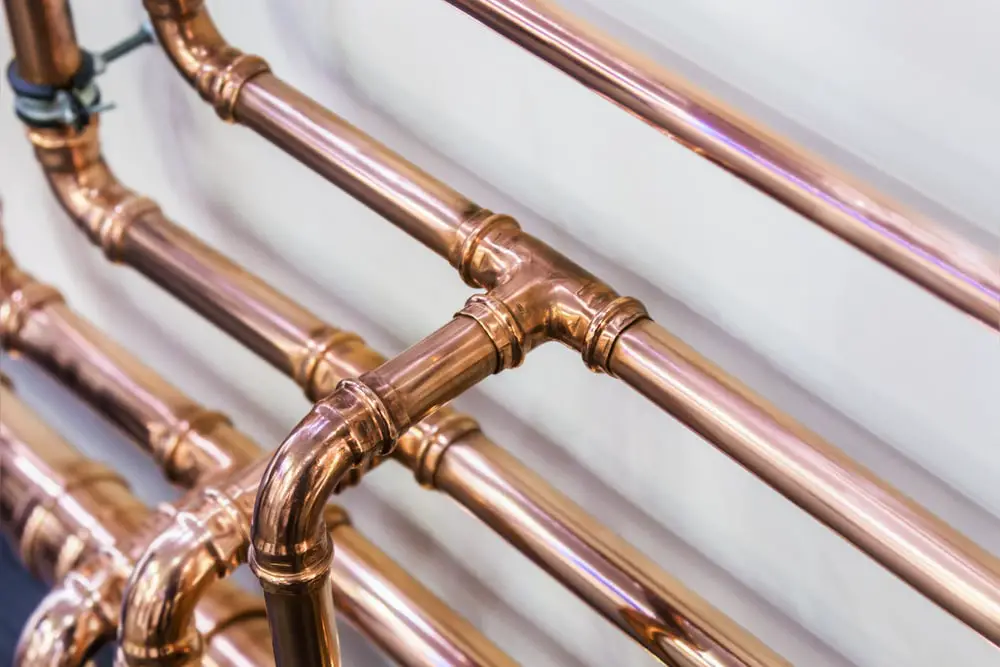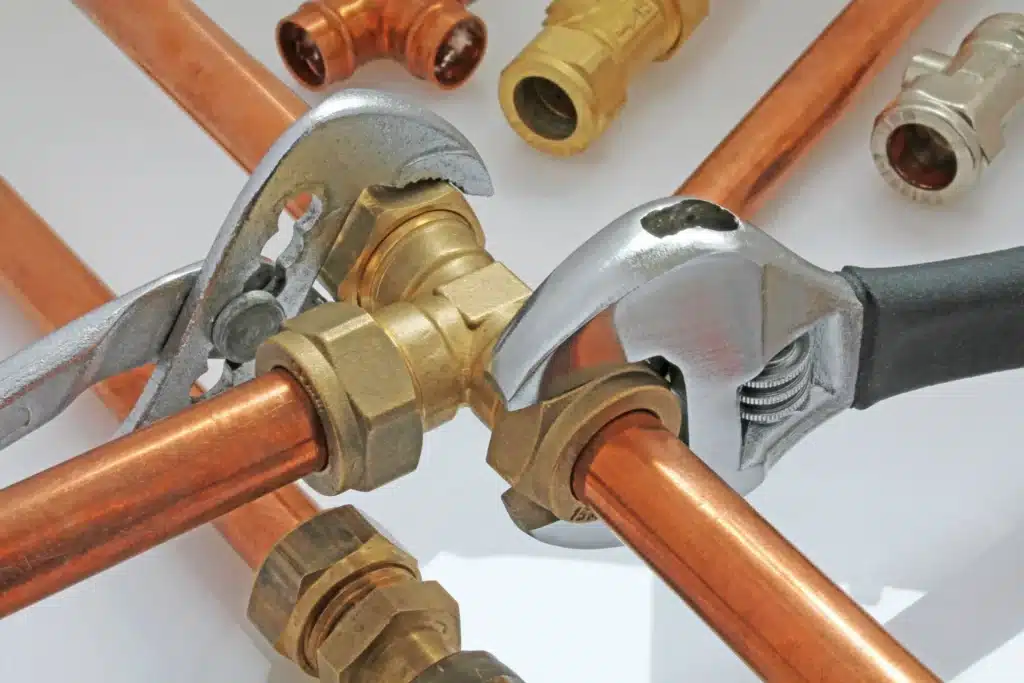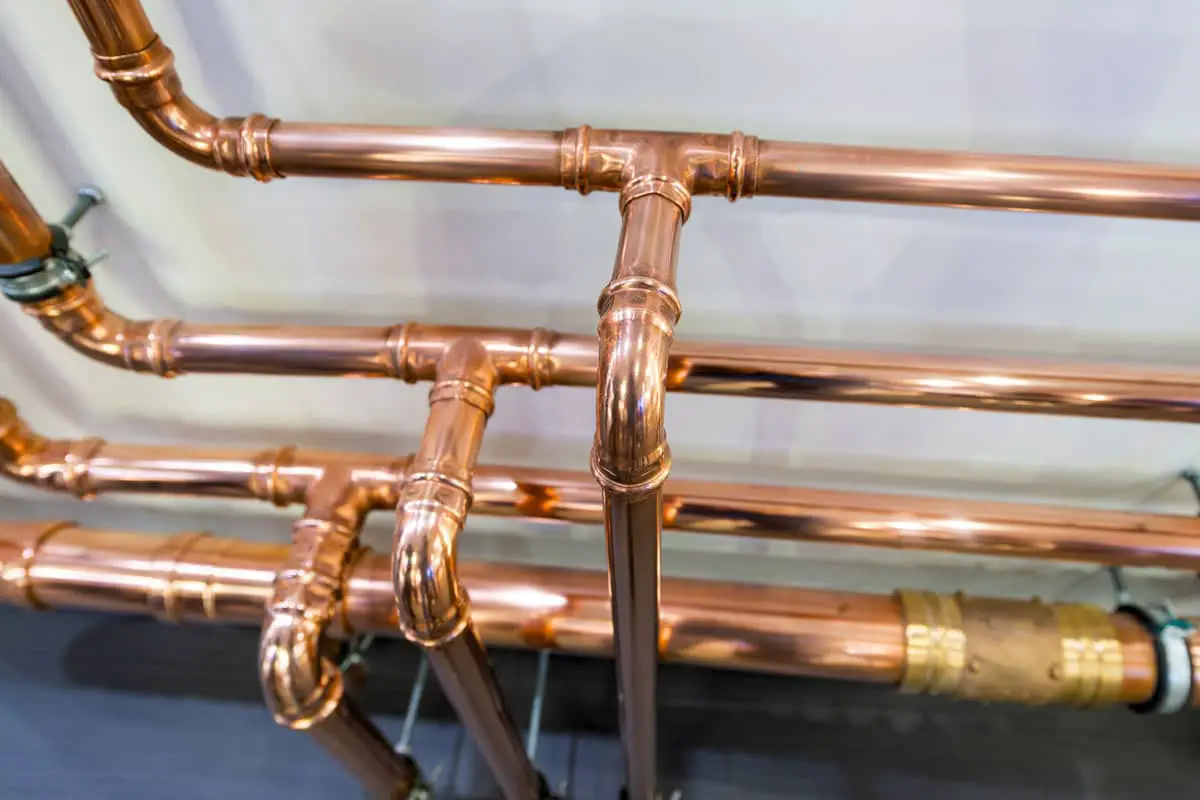when did copper plumbing start
Introduction
when did copper plumbing start: When did copper pipes first appear? People have come up with clever ways to use water for many things, from farming and cleaning to household and business needs. The creation of copper plumbing, which changed how water is distributed and used in societies around the world, is one of the most important steps forward in this field. Copper plumbing has a long past that shows how creative and resourceful our ancestors were. Its roots go back to ancient times.
Copper plumbing has a history that goes back to the beginning of humanity. It has been found through archeology that the Indus Valley Civilization used copper water pipes as early as 2750 BCE. Copper was valuable to the ancient Egyptians as well, and they used it in their complex plumbing systems to bring water to their towns and farms. Copper was a great material for making water pipes and fittings because it lasts a long time and can be shaped easily.
As time progressed, so did the sophistication of copper plumbing systems. During the Roman Empire, copper played a pivotal role in the construction of aqueducts and indoor plumbing systems that supplied water to public baths, fountains, and private residences. The Romans were pioneers in understanding the importance of clean water and sanitation, and copper played a crucial role in ensuring the delivery of potable water to the masses.

Who made the first copper pipes?
It is very hard to find information about the people or society that made the first copper pipes because they lived a very long time ago. Copper has been used by many countries for many things, such as weapons, decorations, and, most importantly, plumbing systems.
The Indus Valley Civilization, which lived in what are now India and Pakistan from 3300 to 1300 BCE, was one of the first known groups of people to use copper lines for plumbing. Excavations at places like Mohenjo-Daro and Harappa have shown that the people there had very advanced city planning and draining systems. For example, copper pipes brought water to public baths, homes, and other buildings. The old people who lived there were very good at engineering, as shown by how precisely these copper pipes were made.
In the same way, the ancient Egyptians, who were famous for their engineering feats, may have used copper lines for their plumbing. For example, the ruins of churches, palaces, and other buildings show that this was true. Copper was great for making water pipes that brought water to different buildings because it was strong and easy to shape.
Copper was an important part of building aqueducts and complicated water systems during the Roman Empire. The Romans knew how important it was to have clean water and good drains to keep people healthy and clean. Their plumbing skills and use of copper pipes made it easier to move water over long distances and into towns. This made sure that public baths, fountains, and other amenities always had water.
Which country used copper first?
Ancient Mesopotamia
Sumerians and Chaldeans of ancient Mesopotamia introduced copper to Egypt and taught them how to make it.
The first country to use copper is hard to determine due to the long history and global distribution of information. Due to its abundance and ease of mining, early humans discovered and used copper.
Ancient Egyptians were early copper users. Egypt began copper mining in the Sinai Peninsula approximately 4000 BCE. Copper’s malleability and durability led them to use it for tools, jewelry, and presumably plumbing pipes. Copper was important to Egyptians and used throughout their society.
The Sumerians, who lived in Mesopotamia (modern-day Iraq) from 4500 to 1900 BCE, also used copper.
What is a copper plumbing system?
Copper pipes are used by construction companies for drain and vent systems and water supply lines in homes. No matter how soft or stiff they are, copper pipes don’t rust and make strong links.
Copper lines, fittings, and fixtures are used in copper plumbing systems to bring potable water into buildings and get rid of waste water. Copper has great properties that make it great for both home and business use, so it has been used in water systems for a very long time.
These are the key parts of a copper plumbing system:
Pipes made of copper
Copper lines, which can be rigid (Type M, L, or K) or flexible (Type L), are used to move water around. If you need to run copper pipes over short lengths or bend them, flexible pipes work better than rigid ones for main water lines and fixed installations.
What Fits
Copper fittings connect copper lines, change the direction of water flow, and link different parts of the plumbing system together. Fittings like couplings, elbows, tees, and reducers are very common.
Parts of valves
Valves are very important for controlling how much water flows through the pipes. Copper valves, which usually have brass parts, are used to control the water pressure, start or stop the flow of water, and separate parts of the system for repairs or maintenance.
Linking parts:
Copper connectors, like compression fittings or soldered connections, are used to connect the copper lines to different plumbing parts, appliances, and fixtures.
Things that are fixed
The copper plumbing system is linked to plumbing devices such as toilets, faucets, and showerheads. People can use these devices to get water for bathing, washing, and drinking, among other things.
Where are copper pipes used in plumbing?
Copper tubing is commonly found in use for heating systems and in hot and cold water transportation. Copper used to be really popular for hot and cold water supply, but it is slowly being replaced by PEX. You can also find copper pipes as a refrigerant line in HVAC systems.
Copper pipes are widely used in plumbing for a variety of applications due to their excellent properties, durability, and reliability. They are suitable for both residential and commercial settings, serving as the primary choice for water supply and distribution systems. Here are some common areas where copper pipes are used in plumbing:
Water Supply Lines
Copper pipes are commonly used as main water supply lines that deliver potable water to buildings and homes. Their resistance to corrosion and ability to withstand high water pressure make them an ideal choice for this critical role.
Indoor Plumbing
Within the walls and floors of buildings, copper pipes are used to create an extensive network of plumbing lines that carry water to various fixtures and appliances, such as sinks, showers, bathtubs, and washing machines.
Hot Water Supply
Copper’s high temperature tolerance makes it particularly suitable for hot water supply lines. These pipes transport heated water from water heaters to faucets and fixtures that require hot water.
Outdoor Plumbing
Copper pipes are used in outdoor plumbing applications, such as for garden faucets, sprinkler systems, and outdoor showers. Their resistance to weather conditions and UV exposure makes them suitable for these outdoor environments.
Plumbing for Commercial Buildings
Copper pipes are utilized for multi-story water supply lines, fire sprinkler systems, and bigger hot water distribution systems in commercial buildings.
Drain and ventilate
Although less popular than PVC or cast iron, copper is used for drainage and ventilation pipes.
Pipelines for water
Water service lines connecting a building to the municipal water supply or a private well can be copper.
Plumbing Fixes and Upgrades
In older homes and buildings with copper plumbing systems, copper pipes are often utilized to replace corroded, damaged, or outdated pipes.
Public Potable Water Lines
Copper pipes supply clean drinking water to schools, hospitals, and entertainment centers.
Is copper plumbing safe?
For water lines, copper pipes with joint materials that don’t contain lead are the best choice. They last for a long time and won’t let chemicals into your water. Copper pipes, on the other hand, are usually more expensive, and the process of mining and making copper is very bad for the earth.
Copper pipes are thought to be safe to use in water systems. It Copper has many useful qualities that make it one of the most trusted materials for water supply and distribution. It has been used in plumbing for hundreds of years. Copper plumbing is thought to be safe for the following reasons:
Corrosion Resistance
Copper exhibits excellent corrosion resistance, which means it is highly unlikely to rust or corrode when in contact with water. This characteristic ensures that copper pipes maintain their structural integrity and do not degrade over time, reducing the risk of leaks or pipe failures.
Antimicrobial Properties
This natural antibacterial effect of copper is often called the “oligodynamic effect.” Bad microorganisms like bacteria, viruses, and others that could pollute the water supply can’t grow or spread because of these qualities. Because of this, copper plumbing helps get clean, safe drinking water to people.
Low Leaching Potential
Copper does not leach harmful substances into the water, ensuring that the water remains free from contaminants. This quality is especially important for drinking water applications, as it helps protect the health of those consuming the water.
High Temperature and Pressure Tolerance
Copper can withstand high temperatures and pressure, making it suitable for both hot and cold water supply lines. This capability prevents pipes from bursting or deforming under the stress of hot water or high water pressure.
Longevity
Copper plumbing systems have a long lifespan, often lasting for decades with proper installation and maintenance. This reduces the need for frequent replacements and minimizes the potential for system failures.
Durability
Copper pipes are robust and durable, able to endure the wear and tear associated with daily use and exposure to various environmental conditions.
Eco-Friendly and Recyclable
Copper is a sustainable and recyclable material, contributing to environmentally conscious plumbing practices and reducing waste in construction projects.
What Advantages Does Copper Plumbing Offer Over Other Materials?
Copper plumbing offers several advantages over other materials, making it a preferred choice for water supply and distribution systems in residential and commercial buildings. Here are some key advantages of copper plumbing:
Durability
Copper is very strong and lasts a long time. With proper placement and care, it can last 50 to 70 years or more. Because it doesn’t rust or break down easily, copper lines keep their structural integrity, so they don’t need to be replaced as often.
Corrosion Resistance
Copper is naturally resistant to rusting, which means that water or other substances don’t make it rust or break down. Copper pipes are less likely to leak and get pinholes because of this feature. This makes sure that the plumbing system works well and doesn’t leak.
Safety for Drinking Water
Copper is a safe material for carrying drinking water. It does not leach harmful substances into the water, keeping the water supply clean and free from contaminants. Additionally, copper’s antimicrobial properties help inhibit the growth of bacteria and ensure the delivery of safe and potable water.
High Temperature and Pressure Tolerance
Copper pipes can withstand both high temperatures and pressure, making them suitable for hot water supply lines and applications requiring elevated water pressure. This resilience prevents pipes from bursting or deforming under stress, contributing to a stable and efficient plumbing system.
Ease of Installation
Copper pipes are relatively easy to work with and can be easily bent and shaped, allowing for smooth installation around obstacles and corners. This ease of installation reduces labor costs and ensures precise fitting during plumbing projects.
Low Thermal Expansion
Copper has a low thermal expansion coefficient, meaning it expands and contracts minimally with temperature changes. This characteristic helps reduce stress on the plumbing system, preserving its integrity over time.
Eco-Friendly and Recyclable
Copper is a sustainable material and highly recyclable. Recycling copper pipes reduces the demand for new raw materials, making it an environmentally friendly choice for plumbing systems.
Aesthetics
Copper plumbing has a distinctive appearance that some homeowners find appealing. It can add a touch of elegance to a building’s interior, especially when exposed in open layouts or as part of decorative elements.

Are There Any Alternative Materials To Copper For Plumbing Systems?
Copper that are commonly used for plumbing systems, each offering unique advantages and considerations based on specific plumbing needs and budget constraints. Some of the most common alternatives to copper in plumbing include:
PVC (Polyvinyl Chloride)
PVC pipes are lightweight, easy to handle, and relatively inexpensive, making them a popular choice for residential plumbing. They are resistant to corrosion and chemical reactions, making them suitable for both hot and cold water supply lines. PVC, on the other hand, is not nearly as durable as copper and may be subject to damage when exposed to UV light; as a result, its usage in outdoor plumbing applications is restricted.
PEX (Cross-linked Polyethylene)
PEX pipes are flexible and can be bent to fit around obstacles, reducing the need for fittings and connections. They are highly resistant to freezing, making them suitable for cold climates, and are less prone to corrosion compared to metal pipes. PEX is often used for both hot and cold water supply lines and is favored for its ease of installation.
CPVC (Chlorinated Polyvinyl Chloride)
CPVC pipes are made of chlorinated PVC, which makes them more resistant to heat and pressure. Because CPVC pipes can handle higher temperatures, they can be used to bring hot water into homes and businesses.
Galvanized Steel
Galvanized steel pipes are coated with a layer of zinc to resist corrosion. While they are durable, they are less commonly used in modern plumbing due to the introduction of newer, more corrosion-resistant materials like copper and PEX.
Cast Iron
Cast iron pipes were historically used for drainage and sewer systems. While less common in modern plumbing, they are still found in older buildings and some commercial applications due to their strength and durability.
Stainless Steel
Stainless steel pipes are resistant to corrosion and offer excellent strength, making them suitable for certain industrial and commercial applications. However, their higher cost often limits their use in residential plumbing.
Can copper plumbing be used for both indoor and outdoor applications?
Copper is strong and flexible, so it can be used for a lot of different plumbing tasks, no matter where it is put. Due to its natural resistance to corrosion, copper can be used outside, where it may be exposed to different weather conditions, dirt, and water. It doesn’t rust or break down, so it stays strong and lasts a long time even outside.
Copper pipes can stand up to hard weather and temperatures, so they can be used outside in places where it gets very hot in the summer or very cold in the winter. Copper is resistant to UV radiation, which means that sunshine doesn’t break it down or make it brittle. Because of this, copper lines can be used in outdoor plumbing systems without the need for extra coatings to protect them.
Copper can handle temperatures below freezing, which makes it a good material for outdoor pipes in colder areas. Copper pipes can grow and contract without breaking or cracking, so they can keep the water flowing even when it’s freezing outside.
Conclusion
Copper plumbing has a long history that shows human skill and resourcefulness in harnessing water for many purposes. With extensive urban planning and drainage systems, the Indus Valley Civilization used copper pipes in plumbing systems as early as 2750 BCE. The ancient Egyptians, Romans, and other early societies used copper in their plumbing systems to efficiently provide water for public baths, fountains, and domestic use.
Throughout the ages, copper plumbing systems have evolved and advanced, with the Renaissance and Industrial Revolution sparking a renewed interest in plumbing technologies. The early 20th century saw copper plumbing gaining widespread popularity, becoming a staple in modern residential and commercial constructions. The reliability, safety, and longevity of copper pipes have made them a preferred choice for water supply and distribution systems, continuing to stand the test of time.
Even though copper plumbing is still used in some current systems, new materials like PVC, PEX, and CPVC have been created because of changes in technology and customer needs. Copper plumbing, on the other hand, has a long history because it has many benefits, such as not rusting, killing germs, being easy to install, and being safe for drinking water.








